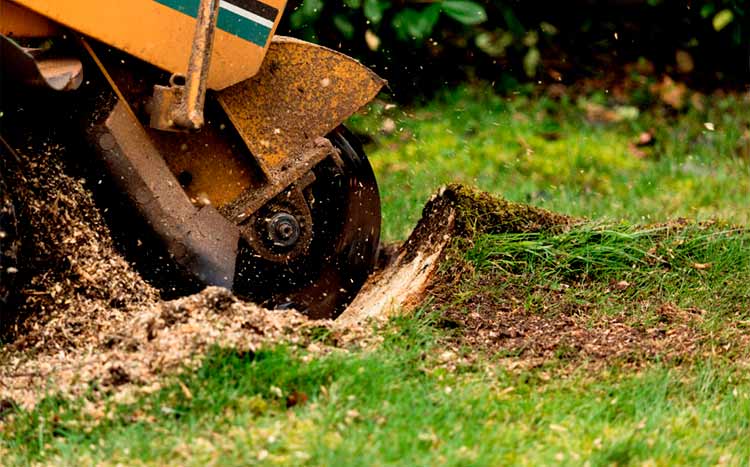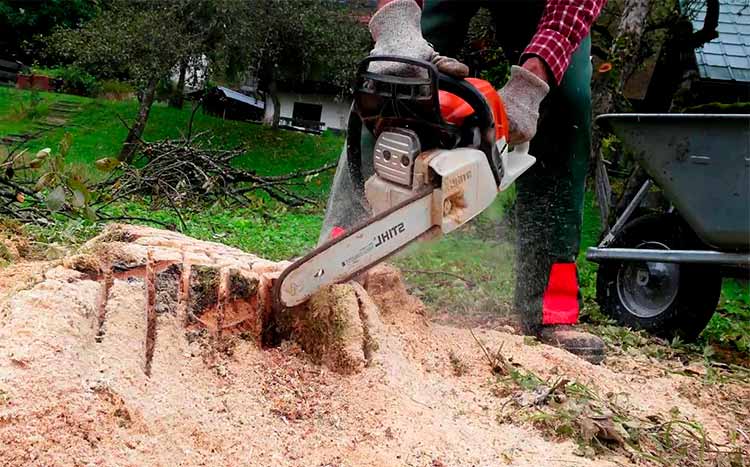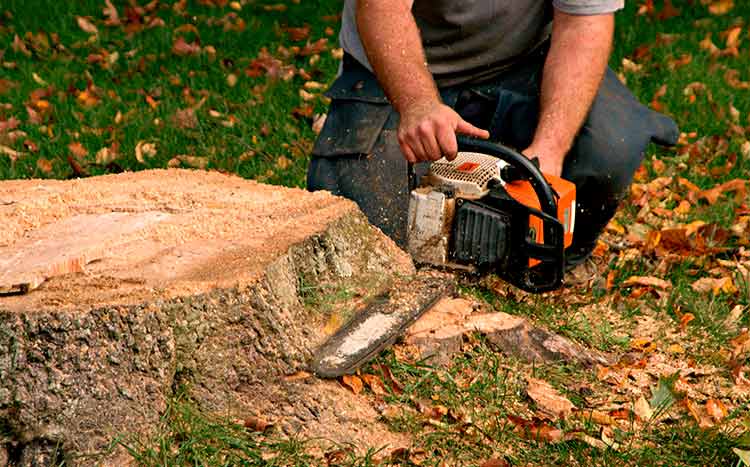Stumps detract from the beauty of a property and can pose safety hazards. Therefore, eliminating them is often essential. The dilemma, however, is whether to grind them down or remove them entirely.
It is better to grind a tree stump than to remove it. Grinding it is a more affordable and less demanding way of getting rid of a tree stump. It is also less intrusive, and as a result, is more friendly to the environment.
Here is all you need to know.

What we cover
ToggleWhy is it better to grind a tree stump?
Tree stump grinding is better than stump removal because of the following reasons.
It is more affordable
Grinding a stump is cheaper than removing it. This is because, with stump grinding, you are not concerned with the tree’s root system. You only focus on getting rid of the trunk and nothing else. As a result, it requires less work, less effort, and less powerful tools. And this usually translates to lower charges.
It is more friendly to the environment
Stump grinding is not focused on a tree’s root system. It is only focused on the stump. This makes it less intrusive as far as the environment is concerned. And so if you care about the environment, it should be your go-to method.
You can easily DIY the process
Stump grinding is a pretty straightforward process. It is not as labor-intensive as tree stump removal. And stump grinders are usually readily available in local hardware stores. These are things that make it way easier to DIY the process.
It leaves a smaller hole/void
Stump removal involves getting rid of both the stump and the roots. Since roots typically extend past the tree’s diameter, they usually leave a large gaping hole in place.
Unlike the large hole that stump removal leaves, grinding, which is solely focused on removing the main part of the trunk, leaves a smaller environmental footprint. This is because the process does not call for getting rid of the stump’s root system. And so if you opt for tree stump removal, you will have to spend more time and money filling up the remaining hole. This makes stump grinding a better option.
When is tree stump removal better?
It is better to remove a tree stump, as opposed to grinding it if you intend on replanting a tree in the same spot.
This is because it frees up the area from the suffocating effect of the old tree’s roots. And given that some trees’ roots, like walnut trees, can release a chemical that discourages the growth of other plants, tree removal is often the better option in cases where replanting a tree is a possibility.
Stump Removal Vs Stump Grinding: Pros and Cons
Before you settle on which is the better method for your circumstances, it is always good to be aware of the benefits and downsides of each method.
Here is a list of the main ones.

Stump Grinding
The stump grinding method of getting rid of stumps involves using a stump grinder to mechanically grind the stump into wood chips. It is a less intrusive process. And it is one that you can DIY.
Here are the main advantages and disadvantages of opting for stump grinding as a way of getting rid of tree stumps.
Pros
- It is one of the fastest ways of getting rid of a stump
- Stump grinding requires less labor
- It is an easy process that a homeowner can DIY
- It produces a byproduct, wood chips, that can be used as mulch
- It is an environmentally friendly method
- It leaves a smaller hole since it does not involve removing a tree’s roots
- A tree service that is providing removal stump grinding services is more likely to charge less for grinding
Cons
- There is always the risk of a regrowth
- It does not offer the best odds for success in case you want to replant a tree in the same spot
- Root decay eventually changes the soil and may make it less conducive
- There is always a risk of the roots damaging plumbing and other utilities
Stump Removal
Stump removal entails removing the stump and the roots. It is an intensive process that has a number of advantages and disadvantages.
Here are the main pros and cons of stump removal.
Pros
- It offers the best odds for successful tree growth in case you want to replant new trees at the spot where the previous tree stood
- It completely stops the spread of diseases
- It eliminates the risk of damage to plumbing and other utilities — because it involves removing a stump plus its roots
- Tree removals tend to completely free up space on a property
Cons
- It is not friendly to the environment because the stump removal process is highly intrusive as the hole left behind tends to be larger
- It tends to leave a larger hole that takes more time, manpower, and soil to fill up
- It is typically the more expensive option
- It takes more time
Why should you grind or remove a tree stump?
Tree stumps are problematic. They can be dangerous. They can be pest magnets. And they can easily lower the value of your property.
The following are the main reasons why removing or grinding a tree stump is necessary.
- To protect the value of your property. Tree stumps make a property unappealing. Therefore, if you have a number of them sticking out in your yard or home, your property is likely to lose its value. And so if you want to maintain its value, you will have to get rid of any unsightly stump that is on your property.
- To avoid accidents and injuries. Stumps increase the odds of accidental falls. They can thus be dangerous to children and unsuspecting visitors. Removing them will make your property way safer.
- To keep termites, carpenter ants, and other pests off your property. Termites, ants, and other pests tend to be attracted to tree stumps. Some of the pests use the stumps as a food source. Others use them for shelter. Therefore, if you want to avoid a pest problem, grinding or removing tree stumps from your property should be at the top of your “To-Do” list.
- To create space for planting a new tree or lawn. A stump can still have an active root system. The stump also occupies space that can’t be used. These two things make it challenging to install a new lawn or plant a new tree. And so you may have to grind or remove the stump in order to make the area conducive for replanting a tree or growing a lawn.
- To make it easier to use a mower. Using a mower around a tree stump can be challenging. The lawnmower can even end up getting damaged. And in such a case, removing the stump or grinding is the best way to make mowing stress-free.
FAQ's
The tree’s roots will remain in place, and they will eventually decay. With time, they will break down and become part of the soil. It is a process that can take up to a decade.
You should grind a tree stump until there is no more of the trunk left. This is typically between 4 inches to 6 inches below the ground surface. However, when it is necessary, stump grinding can be done up to 18 inches below the ground surface.
It typically takes between 3 years and 10 years for a tree stump to rot naturally. The exact time that it takes a given stump to rot varies widely depending on the size of the stump, how close it is cut from the ground, the climate of the area, and its general location.
In cases where rotting agents are used, it can take as little as a few weeks for the tree to completely rot.
No, a tree will not typically grow back after stump grinding. This is because stump grinding takes care of the entire trunk, right up to the roots. While the tree’s root system may still be intact, the trauma of grinding — sometimes up to 12 inches below the soil level — is usually too much for a tree to be able to recover from.

If you need help removing stumps from your property, you should visit GoTreeQuotes.com. It offers a free service that quickly matches you with the top-voted local tree experts in your area.
Using the website, you can get 3 estimates fast by real certified experts in your area in just 2 minutes. Here is how it works.
- You scroll to the top of the page and enter your Zip code.
- Answer questions about your stump removal needs
- Your details will be forwarded to three local experts.
- You will then receive a price estimate for the job and some friendly advice.
IMPORTANT: There is no obligation to hire. This is a free tool and service to be used at your pleasure.














